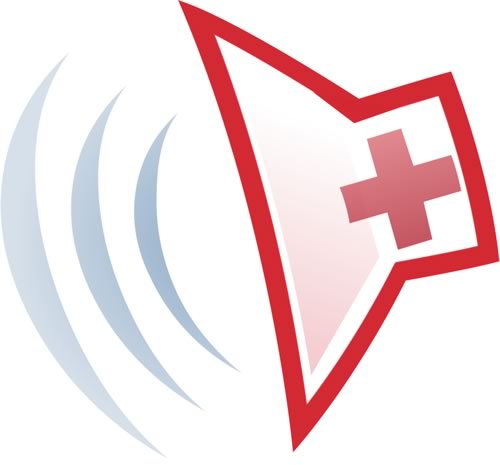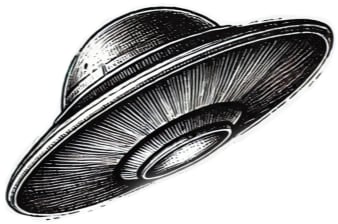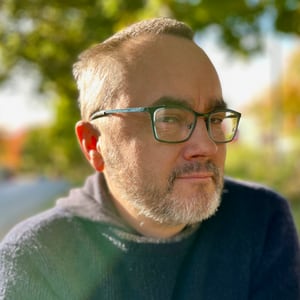Adding injury to injury: shockwave therapy’s big idea (Member Post)
I recently re-introduced readers to shockwave therapy, a cousin of ultrasound that uses high-intensity pressure waves: much bigger and faster than ultrasound's waves, and also at much lower frequencies (infrasonic). Weirdly, it’s a lot like a massage “gun” that produces more potent and penetrating vibrations.
Shockwave therapy is also more painful than ultrasound or massage guns because … it actually does damage. Not a lot, of course. It’s “microtrauma”: minor, diffuse damage, which is sometimes obvious due to minor bruising, but mostly only visible in a microscope.
But what’s the point? Why slap tissues with much higher energy than ultrasound? Why break anything?
Today’s post is all about shockwave therapy’s Big Idea, the why of the thing, the main reason that it’s supposedly effective, how you can supposedly gain from that pain. And that reason is (drum roll please) …
Damage … is … healing! 🤯
Which sounds a bit ridiculous. Would you be more impressed if I said that the core hypothesis of shockwave therapy is that microtrauma hormetically stimulates cellular regenerative processes? Oooh, that’s more like it! Talk nerdy to me, baby!

This post dissects the principles of shockwave therapy, stripping away its armour of jargon. But even without the jargon it’s all still a bit nerdy, and so it’s for PainSci members only. Although focused on shockwave therapy, this post is also about every kind of therapy that claims to be “regenerative” because you “have to break some eggs to make an omelette.”
There’s about 1700 words of good reading ahead — my first monster-post in quite a while. It includes an audio version (standard now).
- “Good” members get all premium posts for $3/month or $30/year, but only by email on publication (new sign-ups will receive the most recent post).
- “Better” and “awesome” members ($5+) get much more: web access to all posts and the archives, podcast, full-text RSS feed, and lots of members-only areas in the main PainSci library.
Buy Good, Better or Best PainSci Membership…

Pause, cancel, or switch plans with ease. Payment data handled safely by Stripe.com. More about security & privacy. PainScience.com is a small publisher in Vancouver, Canada, since 2001. 🇨🇦
The salamander’s domain is for people who are serious about this subject matter. If you are serious — mostly professionals, of course, but many keen patients also sign-up — please support this kind of user-friendly, science-centric journalism.
So crazy it might just work?
Adding injury to injury may seem perverse, but there is an intelligible and testable hypothesis here: that shockwaves have clinically useful biological effects, that their intensity can stimulate recovery, either speeding up normal healing, or — shockwave’s main claim to fame — giving a boost to healing that wasn’t already doing a good enough job for some reason.
Failed healing is a real thing: we don’t know why, but sometimes healing glitches like a bad robot. The best example is the awful phenomenon of fracture non-union, where the bones just do not knit. But that is also the only well known example. It’s possible that something similar but subtler can also happen to soft tissue injuries, but not actually known, let alone why.
Doing a little damage is supposedly a “kickstart” for stalled or insufficient healing, a signal to the body: Hey, do your job! Clean up this mess! This is why shockwave therapy is routinely called a “regenerative” therapy.
So now we have both a hypothesis about what’s wrong and a hypothesis about how to fix/improve it.
But most crazy ideas do not work. There are a lot of problems here.
The hormesis hope
“Hormesis” is the term for a familiar pattern in biology: something that is biologically beneficial at a small dose, even though a higher dose would be dangerous. This describes how exercise works, for instance: too much exercise is injurious, but less is very healthful.
The term can make damage-induced-healing sound more cromulent. And it is a seed of truth here … but it is probably inadequate. There is a major conceptual problem with invoking hormesis to explain the benefits of shockwave therapy.
Exercise leverages adaptive responses tuned by evolution, and hormesis simply reflects the common sensical reality that we can only adapt to so much of a stimulus. As long as we can adapt to it, it’s helpful. If it’s too much to adapt to, it’s dangerous.
But biology mostly only evolves adaptations to natural stimuli, and only responds to artificial ones insofar as they resemble the natural ones. A highly artificial passive stimulus like shockwave therapy — never encountered by any animal in the history of life, and not really resembling anything either — is extremely different from exercise. We are full of "mechanoreceptors" for detecting and responding to a great variety of physical stimuli, and it is not inconceivable that shockwaves could trigger a useful reaction. But it is very far from certain that cells will respond productively to being slapped.
And then it’s yet another big leap to the hope that they will respond productively when they are already in trouble.
The role of “biological effects” in medical science
Biological effects are a dime a dozen. Cells will react to practically anything! If you slapped my face — and shockwave enthusiasts might be in the mood for that — my skin will redden. Slapping indubitably has biological effects. But they’re not therapeutic effects!
Just because cells react to a stimulus doesn’t make it clinically useful. And yet the reactions of cells can be studied in infinite detail, and can always easily be touted as maybe useful. Pair these very science-y findings with overconfident opinions about the “promising” clinical research, and the combination is highly seductive.
Half the output of biomedical science is devoted to churning out over-interpreted evidence of biological effects.
The biological effects of shockwave therapy
There are dozens of papers about the biological effects of shockwave therapy, science that can (and should) excite nerdy, explorative minds — because biology is still a fascinating wilderness. But nerdy minds should also appreciate that it’s all a bit half-baked.

Cells react to practically any stimulus … but is it a useful reaction?
“The underlying mechanism of action,” write Sokolakis et al in 2019, “is mostly unclear and currently under investigation.” And nothing important is different in 2024: “there is no exact mechanism of shock wave therapy in the treatment of orthopedic disorders,” wrote Yazdani et al (in a paper I blogged about just a couple weeks ago).
Even the researchers most responsible for shockwave hype acknowledged in 2018 that “the mechanism of action of ESWT remains unknown” … but Moya et al then talk about those MOAs with scholarly excitement. It’s almost like they think they are indeed known, and that saying “unknown” was just performative humility! (They are clearly “true believers” in shockwave therapy, a collaboration of several authors from around the world who have generated most of the shockwave therapy research currently indexed by PubMed. There are issues with the quality of their review, but it is at least a fine overview of what these shockwave proponents believed as of 2018, and likely still believe now.)
They quote four possible mechanisms, all first proposed in 1997 by Haupt: chondroprotective! angiogenic! anti-inflammatory! anti-apoptotic! Gosh!
That paper was probably a major inspiration for the invasion of shockwave therapy into orthopaedic medicine. Moya et al cite (at least) 36 papers to support Haupt’s claims (twenty years later), and it’s an impressive-looking list. But it’s really more like about a half dozen citations, because the diversity of authorship is quite low, and there’s a lot of overlap and repetition. These are mostly papers by people who are all co-authors on this review, especially a couple of prolific Chinese authors.
All their jargon can be reduced to the same plain English idea: shockwaves make cells dance … and supposedly in a useful way. According to the clinical research. According to Moya et al.
According to me? See below.
Potent therapy raises expectations
The strong sensations of shockwave therapy are probably rocket fuel for placebo. “Potency bias” is our tendency to assume that stronger medicines are better. We truly believe that there is no gain without pain, and we assume that pain is justified by gain.
A funny example: people love to love Buckley’s cough syrup, a notoriously foul-tasting Canadian “medicine” with no conventional active ingredients, just gross ones like lots of camphor and pine needle oil, advertised with the slogan, “It tastes awful. And it works.” That slogan taps directly into the pro-potency bias! It’s practically an explanation for it. People can’t love Buckley's because it’s actually effective, because it cannot possibly be, so they love it simply because the taste is horrifying … and they think intense medicines must be more potent. Surely no one would sell such diabolical swill if it wasn’t good medicine?! Right?
There are many sketchy no-pain-no-gain therapies that capitalize on the potency bias, a rogues gallery of “provocation therapies”: prolotherapy, dry needling, cupping, fascial therapy, “scraping massage” (e.g. Graston), and so on.
Even if it works, shockwave therapy is not from a great neighbourhood.
Would you like to fry with that? The irrational double-standard for ultrasound versus shockwave
Consider this weird contradiction: ultrasound’s thermal effects are definitely capable of causing internal burns, but no one ever acts like that’s a good idea.
Doing damage is not just acceptable in shockwave therapy, it’s the point. So why not in ultrasound? Other than the fact that “internal burns” is nightmare fuel, what’s the difference between tuning infrasound to cause slight mechanical damage versus tuning ultrasound to cause slight thermal damage? Damage is damage — you clearly don’t want too much of it, even if you do accept that just the right amount is “regenerative.”
Ultrasound damage is only ever considered a serious error, malpractice … but people pay for shockwave’s minor, diffuse, microtraumatizing powers? What a weird world.
You can’t kickstart a motorcycle that’s already running
And one more conceptual glitch with shockwave therapy: the reason most overuse injuries don’t heal is probably not because healing has “failed,” per se, but rather because it simply cannot keep up with the mechanical strain on the tissue. The healing is happening, but it feels like Lucy trying to keep up with the chocolates on the conveyor belt. Do you want to add more strain to that equation? Do you think that Lucy would do better with more chocolates?
And yet shockwave therapy is probably applied to overuse injuries more than any other kind of condition! And there’s probably nothing wrong with the healing in many such cases, if not most.
It’s almost like no one has really thought any of this through.
Mechanism masturbation par excellence
All of this is classic “mechanism masturbation” — a perfect term coined by science journalist Jonathan Jarry, describing premature speculation about how a treatment works before showing that it actually does work. Shockwave therapy is the best example of it that I can think of.
It doesn’t matter what shockwaves do to tissues if it doesn’t translate into a practical, clinical benefit. And it mostly seems not to.
Shockwave therapy remains unproven for any condition. The evidence is still inadequate even for its greatest hits, plantar fasciitis and fracture healing. There are putatively positive studies of shockwave therapy for several conditions, but all are flawed and dubious, and there are plenty of negative ones as well.

None of which is surprising, considering the shaky theoretical foundations of shockwave therapy.
I fact-checked this to death this before publishing. I didn’t want to be embarrassed by my overzealous cynicism. But I have read more than enough of the literature recently to hold my ground: shockwave therapy has minor benefits at best. Like a UFO skeptic, I’d truly like to believe in a more amazing world, where aliens are visiting us, and shockwaves are regenerative medicine … but I think the “evidence” for either of those is a joke. Shockwave science isn’t quite as bankrupt as UFO-ology, but it ain’t far off.
To stretch that metaphor a little further, yes, some of the evidence is “hard to explain.” But that doesn’t mean it’s actually inexplicable — just that we don’t actually know exactly what fraud or error was committed. Never forget that scientific fraud isn’t nearly as rare as it should be, and it’s downright common for scientists to work in the gray zone between fraud and error, cheerfully torturing data until it tells them what they want to hear — whatever will advance their reputations and make it easier to get more funding.
I review the evidence more thoroughly in my full guide to ultrasound and shockwave therapy, which has had many major recent upgrades (and I’ll be scrambling after this to continue building it up). There’s no paywall for any of that — you can be disappointed by the evidence at no charge!
